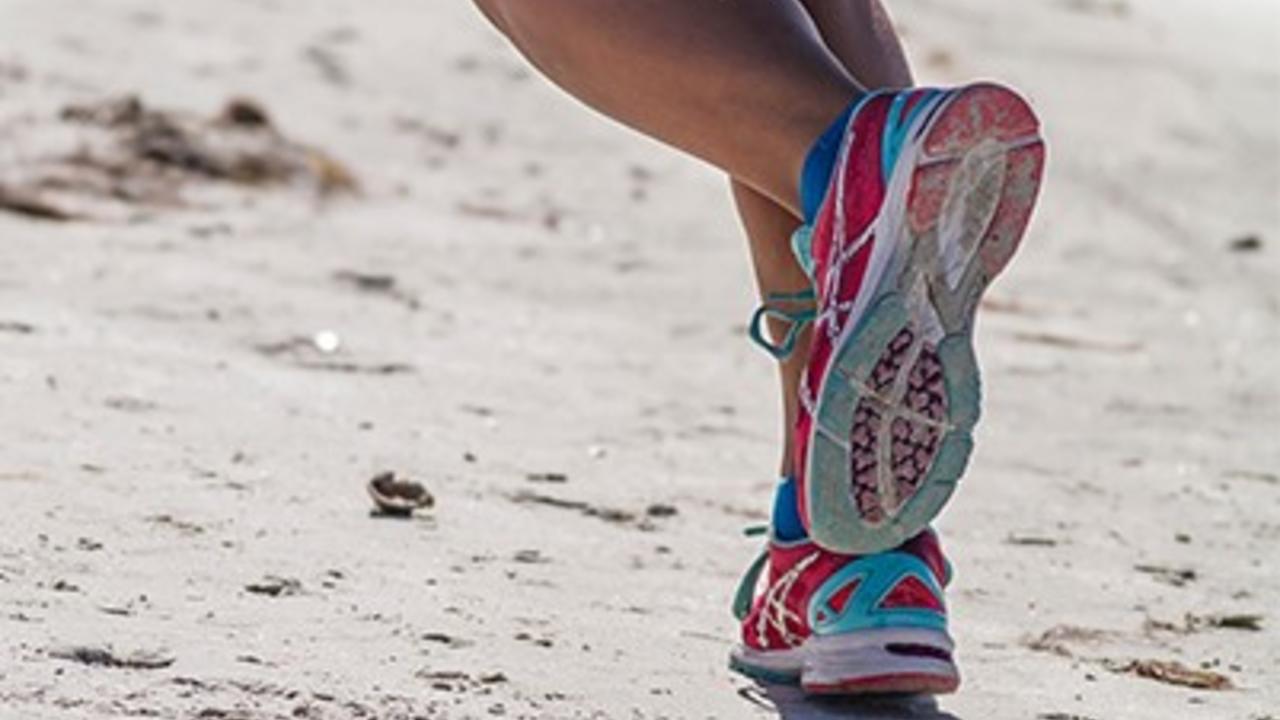
Common Running Injuries and How to "Treat Yo'self"
Written by Delina C. Korbel PT, DPT, OCS, CSCS
This post is for you dedicated runners out there who want, not only to be able to run today, but to be able to run for many years to come! Today’s entry is to give you some tips on how to run with less pain and hopefully prevent pain in the future. Learning to “Treat Yo’self” is critical in these times of quarantine and closure of gyms.
There are so many benefits to running, including decreased risk for obesity and cardiovascular disease. Running provides psychological benefits, social benefits, and best of all, it is easily accessible and you can do it anywhere. (4) However, if you're reading this, you are likely already aware of how running is also associated with higher risk of overuse injuries. Seventy percent of running injuries occur at or below the knee. (11) If you're currently injured or recently had a running-related injury then you may be creating greater impact force and loading rates compared to un-injured runners, which can lead to further injuries. (1)
Here’s a few tips you can monitor on yourself, for decreasing pain & preventing injuries are.
- Avoid rapid increase in mileage. Aim for no more than a 10% increase in distance per week.
- Try to run with a slight forward trunk lean while running ~ 7-10 deg trunk bend (Chris Powers)
- Determine Cadence (step rate) and increase it by 5-10% or > 174 steps/min(2)
- Try landing softer when running (Irene Davis)
- Improve your core & lower body strength - Can you perform multiple single leg hops with good mechanics? Try filming yourself and check!
- Upgrade your footwear to fit your running style (Keep an eye out for my future blog on choosing the best footwear for your running style)
- For those who are dedicated, maybe addicted, runners, when possible keep your weekly mileage under 40 miles per week. (4)
You could also try and have a friend film you run and see if you can catch your own deviations! If you’re going to try this at home, do it on a treadmill and run at least 6 min before filming. (1-3,6)
As Movement Specialists at Evergreen Physical Therapy, the common running faults that we look for are:
- Cross-over Gait
- Toe-out Gait ( especially on one side )
- Hip Drop or Trunk Lean to the side
- Kissing Knees (Dynamic Knee Valgus/Femoral Internal Rotation/Adduction)
- Over-striding: Not enough knee bend at first contact – 15-20 deg is normal(1,3)
- High Vertical Bounce > 7 cm (where body goes up and down too much)(1)
- Loss of hip extension
- You can also video your Single Leg Squat to get an idea on how you move
Not all of faults are easy to identify without training, but here are some easy ones to watch out for:
1. Kissing Knees:

2. Hip Drop:

3. Compensated Hip Drop:

You can work towards correcting these issues in a few different ways.
Many times, these movement faults occur due to weakness of your core and "glute" muscles and poor motor control. (6) Biofeedback (watching yourself run), strengthening your core/hip muscles, and retraining motor control can give you a chance to decrease your own pain and improve how your run (1-3)
Get out, be active and stay healthy! Don’t hesitate to reach out to us at Evergreen Physical Therapy! Send us a video of you running! We are excited to walk or run with you down this road and be your guide to getting life back on track. We can create customized programs to help you meet your goals and maintain accountability.

Delina Korbel is a Doctor of Physical Therapy specializing in orthopedics and return to sport injury prevention and concussion management. Her expertise has helped athletes of all skill levels enhance their performance through personalized training.
To schedule an appointment with Delina or one of our staff please give us a call at (626) 683-8536 or Request an Appointment here. Lastly, don't forget to subscribe to our blog to get more great insights from our specialists!
This is not medical advice, please reach out to your physical therapist or physician if you have specific questions or pain. You can reach us at 626.683.8536. Keep a look out for our next blog on footwear.
References:
- Heiderscheit, BC. Orthopedic Management of the Runner, Cyclist, and Swimmer: Biomechanics of Running. Independent Study Course 23.1.4. pp 1-11
- Heiderscheit BC, Chumanov ES, Michalski MP, Wille CM, Ran MB. Effects of step rate manipulation on joint mechanics during running. Med Sci Sports Exerc. 2011; 43(2): 296-302
- Heiderscheit, BC. Orthopedic Management of the Runner, Cyclist, and Swimmer: The Runner: Evaluation of Common Injuries and Treatment. Independent Study Course 23.1.1. pp 1-18
- van Gent RN, Siem D, van Middelkoop M, van Os AG, Bierma-Zeinstra SM, Koes BW. Incidence and determinants of lower extremity running injuries in long distance runners: a systematic review. Br J Sports Med. 2007;41(8):469‐480. doi:10.1136/bjsm.2006.033548
- Sousa AC, Neiva HP, Izquierdo M, Cadore EL, Alves AR, Marinho DA. Concurrent Training and Detraining: brief Review on the Effect of Exercise Intensities. Int J Sports Med. 2019;40(12):747‐755. doi:10.1055/a-0975-9471
- Souza RB, Powers CM. Differences in hip kinematics, muscle strength, and muscle activation between subjects with and without patellofemoral pain. J Orthop Sports Phys Ther. 2009: 39 (1): 12-19
Stay connected with news and updates!
Join our mailing list to receive the latest news and updates from our team.
Don't worry, your information will not be shared.
We hate SPAM. We will never sell your information, for any reason.

